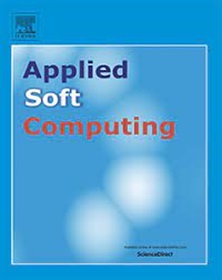Pathology characteristics-aware federated learning for weakly supervised nuclei segmentation
IF 6.6
1区 计算机科学
Q1 COMPUTER SCIENCE, ARTIFICIAL INTELLIGENCE
引用次数: 0
Abstract
In federated learning, a key challenge in nuclei segmentation lies in data heterogeneity, primarily resulting from the diverse sources of pathology images. Nuclei in pathological images are typically small and densely distributed, making accurate annotation highly labor-intensive and reliant on specialized expertise. Weakly supervised learning is widely adopted for this task, as it only requires point annotations at the centers of nuclei. However, point annotations lack precise boundary information, thereby exacerbating the difficulties introduced by data heterogeneity. To address this issue, we propose a preprocessing strategy that leverages the unique optical properties of H&E stained images to generate Contrast-Difference Enhanced Images (CDEI). These CDEI highlight nucleus boundaries to varying extents based on the tonal characteristics of H&E stained images. Building on this strategy, we propose a Multi-source Hierarchical Enhancement Network (MHEN) as the client-side architecture. MHEN takes both the H&E stained images and the corresponding CDEI as input, effectively mitigating the limitations of weak labels by incorporating enhanced boundary cues. Furthermore, considering the characteristics of nuclei segmentation, we design a Federated Nuclei-Weighted Aggregation strategy on the server side. This strategy estimates each client’s contribution to the global model by quantifying the number of nuclei present in its local pathology images. To thoroughly assess the effectiveness of our approach, we compare it with both conventional weakly supervised methods and existing federated weak supervision frameworks. The experimental results demonstrate that our proposed federated learning framework for weakly supervised nuclei segmentation significantly outperforms existing methods. Our source code is available on GitHub.1
弱监督核分割的病理特征感知联合学习
在联邦学习中,核分割的一个关键挑战在于数据的异质性,这主要是由于病理图像的来源不同。病理图像中的细胞核通常较小且分布密集,这使得准确注释高度劳动密集型且依赖于专业知识。弱监督学习被广泛应用于该任务,因为它只需要在核中心进行点注释。然而,点标注缺乏精确的边界信息,从而加剧了数据异构带来的困难。为了解决这个问题,我们提出了一种预处理策略,利用H&;E染色图像的独特光学特性来生成对比度差异增强图像(CDEI)。这些CDEI根据H&;E染色图像的色调特征不同程度地突出了核边界。在此策略的基础上,我们提出了一个多源分层增强网络(MHEN)作为客户端架构。MHEN将H&;E染色图像和相应的CDEI作为输入,通过加入增强的边界线索,有效地减轻了弱标签的局限性。进一步,考虑到核分割的特点,在服务器端设计了联邦核加权聚合策略。该策略通过量化局部病理图像中出现的细胞核数量来估计每个病人对全局模型的贡献。为了彻底评估我们的方法的有效性,我们将其与传统的弱监督方法和现有的联邦弱监督框架进行了比较。实验结果表明,我们提出的用于弱监督核分割的联邦学习框架明显优于现有的方法。我们的源代码可以在GitHub.1上获得
本文章由计算机程序翻译,如有差异,请以英文原文为准。
求助全文
约1分钟内获得全文
求助全文
来源期刊

Applied Soft Computing
工程技术-计算机:跨学科应用
CiteScore
15.80
自引率
6.90%
发文量
874
审稿时长
10.9 months
期刊介绍:
Applied Soft Computing is an international journal promoting an integrated view of soft computing to solve real life problems.The focus is to publish the highest quality research in application and convergence of the areas of Fuzzy Logic, Neural Networks, Evolutionary Computing, Rough Sets and other similar techniques to address real world complexities.
Applied Soft Computing is a rolling publication: articles are published as soon as the editor-in-chief has accepted them. Therefore, the web site will continuously be updated with new articles and the publication time will be short.
 求助内容:
求助内容: 应助结果提醒方式:
应助结果提醒方式:


